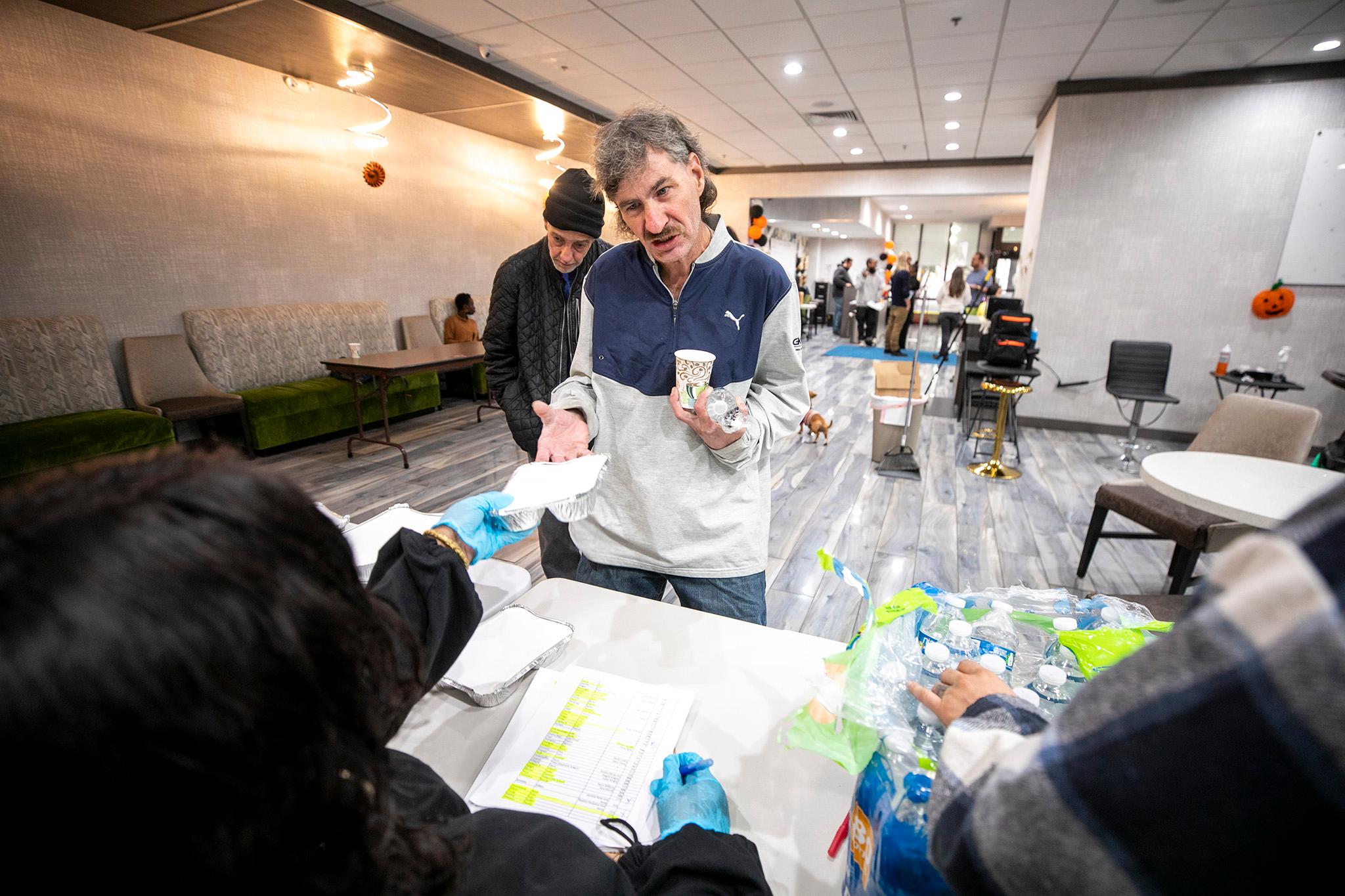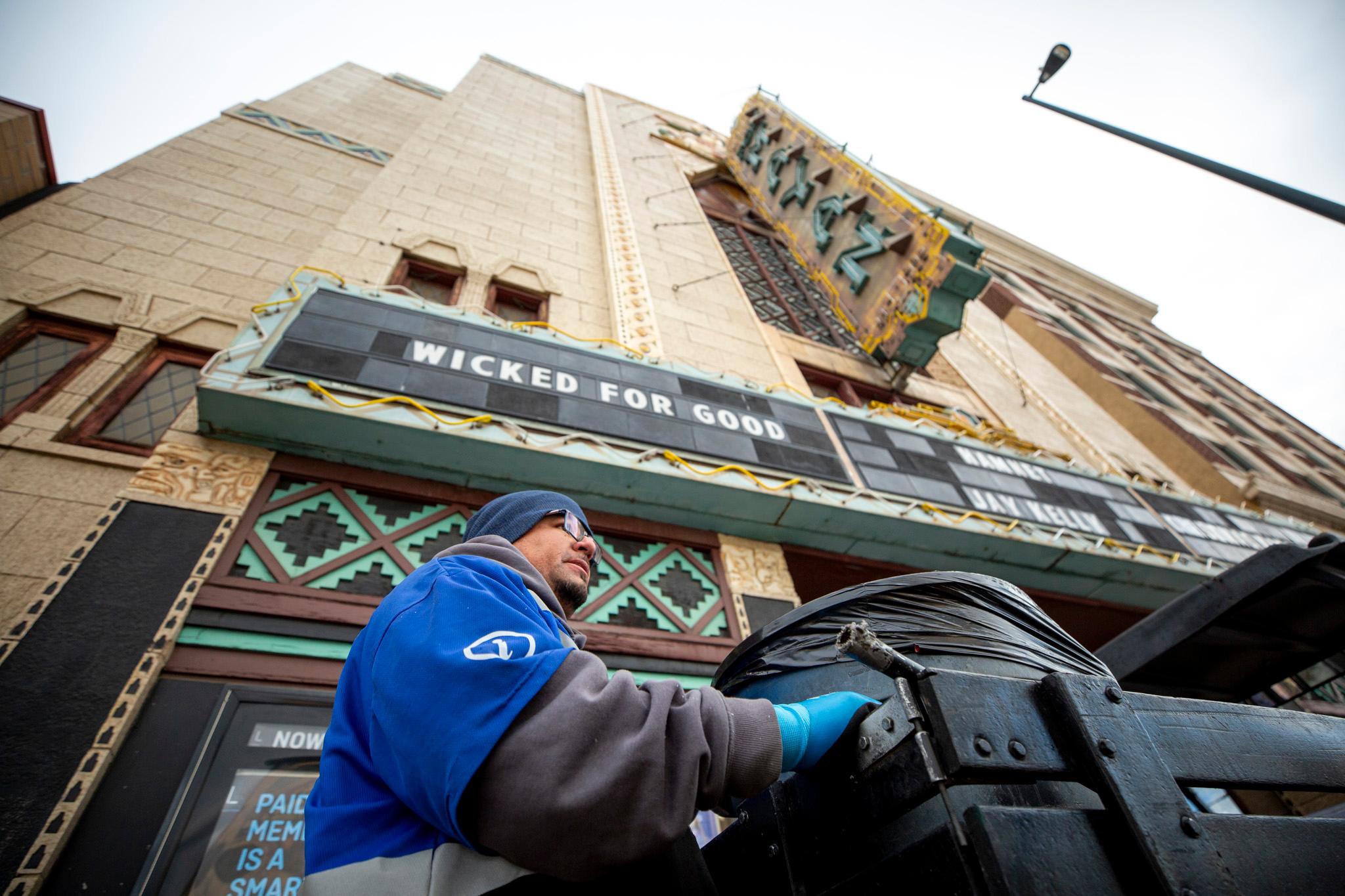Denver Mayor Mike Johnston's administration has a counting problem.
The new mayor campaigned to end homelessness in four years -- something no other mayor has done.
On July 18, his first full day in office, he launched an ambitious short-term plan, costing taxpayers more than $48 million, to bring 1,000 people living on the streets indoors into housing and shelter by Dec. 31.
With weeks to go, the city's Housing Outcomes dashboard shows more than 580 people have been brought indoors. Johnston launched the online dashboard in September in the name of accountability and transparency.
City officials said the dashboard documents each person who had a successful housing outcome. At the time, Clarissa Boggs-Blake, a manager with the Office of Emergency Management's Joint Information Center, explained in an email that a housing outcome is defined as a person living indoors for at least 14 days. When asked by Denverite if that had changed at an encampment resolution, HOST spokesperson Derek Woodbury said no.
But just weeks before Johnston goal deadline, city employees discovered a major problem: People who had been inside for 14 days was not what the dashboard actually tracks.
Here's what the House1000 dashboard truly documented, despite contradicting claims from city leadership.
Since its beginning, what the dashboard has actually counted is each person brought from the streets indoors, without regard to how long they stay that way, said Sabrina Allie, a spokesperson for the Department of Housing Stability, also known as HOST.
It's a discrepancy Allie said many in the city had only recently become aware of. The mayor's office also confirmed the new understanding of the data.
"The number of people brought indoors has always been added to the dashboard/thermometer as the information became available through our systems and has never been tied to any specific timeframe," explained Jose Salas, a spokesperson for the mayor, who was not employed by the city when the database launched.
To be counted on the dashboard, people experiencing homelessness simply had to leave an encampment and be brought inside to one of the city's House1000 facilities, and have a caseworker enter their name into the seven-county Homelessness Management Information System.
House1000 facilities could include a room in a hotel or motel the city purchased, a group shelter like Crossroads, or the home of a relative or friend.
There were no requirements for how long people stayed inside after data was entered. If someone went back to the street the same day the information was entered, the city would still count their housing outcome as successful on the dashboard.
In the majority of cases, people have chosen to stay sheltered, said Allie, but the public data does not indicate that one way or the other, because neither length of stay nor long-term outcomes are currently tracked on the dashboard.
That differs from how the city has been presenting the data for months, a fact first noted by Kyle Clark at 9News.
So what gives?
A few weeks ago, city officials realized they had been misrepresenting the data tracker to City Council and the public from the beginning, according to Allie.
No immediate efforts were made to correct the record or let the public know that multiple agencies and the mayor's office had been letting misinformation about its housing track record spread for months.
The information was bad, but it wasn't a lie, Allie said.
Until recently, some employees of the mayor's office and members of the emergency operations center overseeing Johnston's homeless state of emergency believed the dashboard tracked people who had stayed indoors for 14 days. Even a spokesperson for the Department of Housing Stability believed it.
But leaders of House1000 and the city were simply wrong and apparently not listening to HOST's data analyst, Anthony Rodriguez. He was in charge of the database and tried to communicate that the dashboard didn't relate at all to how long somebody stayed housed, according to Allie.
For an unknown reason, city officials didn't get the message.
"The only thing we can pinpoint is to a misunderstanding and miscommunication from staff," Salas said.
Since inauguration, an increasing number of City Council members have been losing faith in Johnston's homeless state of emergency.
District 5 Councilmember Amanda Sawyer first objected to the plan, questioning the mayor's financial transparency.
"You're slowly losing me," said District 8 Councilmember Shontel Lewis, who expressed concern that the city was moving too fast to get it right.
For Stacie Gilmore, the two-week timeframe was already a poor measure of a successful housing outcome. She asked the city to lengthen the amount of time a person had to stay indoors for them to be tallied on the dashboard, a request the mayor's office never fulfilled.
"The 14-day is just a first indicator as an initial measure of success, especially as the initiative was in its infancy," Salas said, adding that the city will soon start publicizing longer-term data that shows how well it's moving people toward long-term and permanent housing.
The vast majority of the 580-some people who have been counted toward Johnston's House1000 goals are not actually "housed" as defined by city and federal standards, Allie said. They are simply sheltered and waiting for more stable housing to open.
How did this information come to light? Not city transparency.
The revelation followed a sudden spike in the dashboard, with the number of successful housing outcomes leaping from 317 to 491 between Dec. 7 and Dec. 8.
Reporters asked the mayor's office for an explanation of the jump.
Johnston's spokesperson, Jose Salas, pointed to a recent "encampment resolution," in which the city moved people living along a block together all indoors at the same time.
"The recent increase to the dashboard is due in part to last week's significant movement of people from the encampment near 21st and Curtis to indoor units," Salas told Denverite.

However, if the dashboard was tracking people who stay housed for at least two weeks, there should have been more of a lag before residents of that encampment resolution showed up in the data
Clark, of 9News, first asked why the city had changed how it was counting successful outcomes and was no longer using the 14-day metric.
Initially, the city claimed nothing had changed and left it at that, a contradiction of past statements that made the mayor's office look less than honest.
It took more prodding from reporters who noticed the discrepancy for the city to acknowledge its mistakes in characterizing the dashboard to the public, including the taxpayers who fund House1000 and the City Council members who approved it.
Denverite pushed for a deeper explanation and uncovered the miscommunication between staff and the mayor's office and the lack of public accountability once the correct information had been clarified internally.
Better information should be coming soon.
According to a presentation from the mayor's Senior Advisor on Homelessness, Cole Chandler, to city council members, a fresh, soon-to-publish dashboard will deliver higher-quality information.
"We are working on an updated dashboard and tracker that will expand on these metrics to share longer-term outcomes, which is the end goal of the initiative," Salas noted.
The dashboard will indicate who has stayed indoors for 30 days and beyond and who has actually secured something stable and long-term outside of shelters.

Allie also says the types of shelter included in the system will be updated. People sent to group shelters will no longer be counted as having received successful shelter outcomes.
"The mayoral administration has made it clear that congregate shelter wasn't consistent with the House1000 goals and intentions," Allie said.
That's even as the mayor and his staff have said all along that group shelter was part of the plan.
As a result of dropping those staying in group shelters from the dashboard, the number of people with successful housing outcomes will likely drop ahead of the fast-approaching Dec. 31 deadline.












